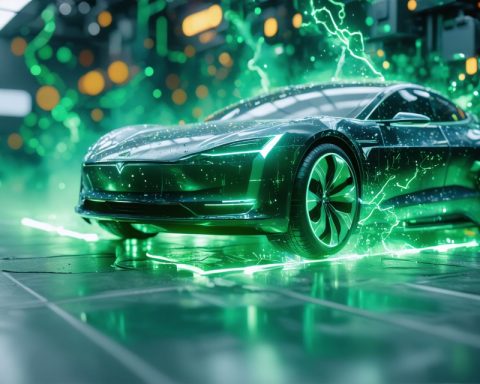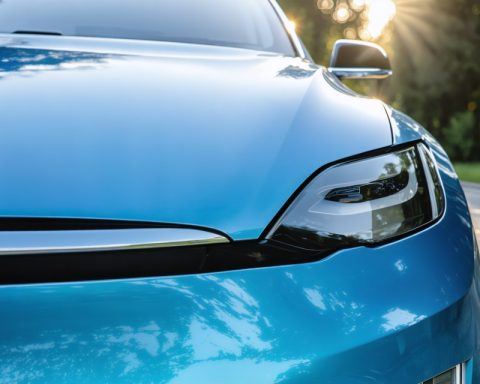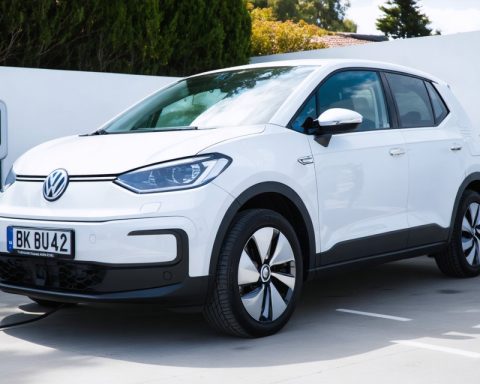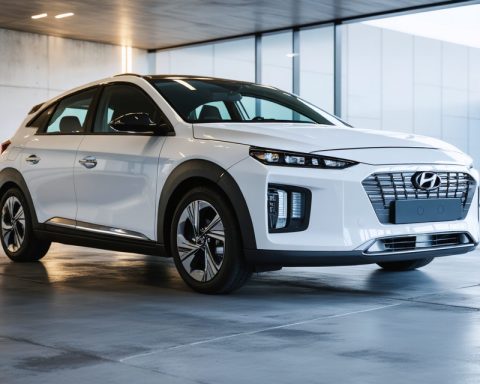- Electric vehicles (EVs) are transforming urban transportation, replacing traditional combustion engines with zero-emission alternatives.
- EVs contribute to cleaner air and reduced noise pollution, improving urban living conditions and public health.
- The expansion of charging infrastructure and advancements in battery technology are overcoming barriers like “range anxiety.”
- Auto industry leaders and legacy manufacturers are introducing diverse EV models, integrating AI and autonomous technology.
- Promoting awareness about the long-term cost savings and environmental benefits of EVs is crucial for wider adoption.
- EV-friendly policies can stimulate local economies by fostering new industries and job opportunities related to electric mobility.
- The shift to a renewable energy-powered urban transport system paves the way for a sustainable, livable future.
In the bustling heart of our cities, electric vehicles (EVs) have rapidly shifted from a futuristic concept to a concrete reality, revolutionizing urban transportation. Their silent hum now permeates street corners once dominated by the growl of combustion engines. With each glide down asphalt avenues, EVs not only promise a more sustainable future but actively shape it.
Picture a cityscape where air pollution visibly wanes, thanks to the zero tailpipe emissions of EVs. This transformative shift dramatically reduces urban air pollution, contributing directly to cleaner skies and healthier residents. The electric resurgence spearheaded by industry titans like Tesla, alongside legacy automakers venturing into electric models, invites a new era of sleek design coupled with environmental conscience.
Yet, the EV revolution isn’t just about beautifying the horizon. It also addresses some of the most pressing challenges in urban areas: noise pollution and the need for sustainable energy sources. Electric motors run nearly silent, offering a serene urban environment. Moreover, as cities invest in renewable energy, EVs charged with solar or wind power further slash carbon footprints, epitomizing green urban living.
Charging infrastructure is expanding at a breakneck pace, setting a foundation for this new urban reality. Charging stations pepper the urban landscape, making it easier for city dwellers to adopt EVs without hesitation. Advancements in battery technology promise faster charging and longer ranges, turning “range anxiety” into a relic of the past.
Diverse auto industries are embracing this transformation, giving rise to a rich variety of EVs—from compact city cars to luxury SUVs and commercial fleets. These vehicles, driven by cutting-edge AI and autonomous driving technology, symbolize not just environmental responsibility but also innovation at its finest.
Educating potential consumers about the benefits of electric vehicles remains paramount. Initiatives that raise awareness about cost savings over time, reduced maintenance, and environmental benefits foster trust and enthusiasm. Cities that embrace EV-friendly policies see not just drops in emissions but boosts in local economies as new industries and jobs take root in charging networks and electric mobility services.
Electric vehicles are here to stay, reshaping our cities into more livable, sustainable, and forward-thinking spaces. Embracing this change today steers us closer to cleaner air, quieter streets, and a healthier planet. Cities humming on electric power aren’t just visions—they’re tangible destinations we are racing towards.
Our urban future rides on electric wheels, silently but powerfully driving us towards a brighter tomorrow.
Why Electric Vehicles Are Driving Us Into the Future
The EV Revolution: Beyond the Basics
Electric vehicles (EVs) have rapidly become a cornerstone of urban mobility, heralding a transformative era in which cleaner, quieter, and smarter transportation reshapes our cityscapes. While the well-known benefits include reduced emissions and noise, there’s much more beneath the hood as EVs evolve and proliferate.
How-To Steps for Transitioning to an Electric Vehicle
1. Assess Your Driving Needs: Consider daily commuting distances, access to charging infrastructure, and specific model requirements that align with your lifestyle.
2. Explore Government Incentives: Research available financial incentives aimed at reducing the overall cost of purchasing an EV, such as tax credits or rebates.
3. Evaluate Charging Solutions: Determine home charging options and the layout of public charging stations in your area using apps designed to map and locate EV chargers.
4. Test Drive Potential Models: Experience the unique driving characteristics of EVs, like regenerative braking and instantaneous torque, by scheduling test drives.
Real-World Use Cases and Emerging Trends
– Urban Fleets: Many cities have adopted electric buses and municipal fleets to reduce urban pollution significantly. Cities like Shenzhen have already transitioned fully to electric buses, setting a precedent for others worldwide.
– Shared Mobility Systems: Companies like Uber and Lyft are gradually incorporating EVs into their rideshare and delivery fleets, contributing to reduced emissions on a large scale.
Market Forecasts and Industry Trends
– Exponential Growth: According to the International Energy Agency (IEA), the number of EVs on the road is expected to grow from 11 million in 2020 to 145 million by 2030 under current policy measures.
– Battery Technology Advancements: Continued developments in battery efficiency and recycling methods aim to make EVs more sustainable, affordable, and environmentally friendly.
Reviews & Comparisons: Popular EV Models
– Tesla Model 3: Offers an unrivaled combination of range, speed, and onboard technology. Known for its comprehensive charging network and software integration.
– Nissan Leaf: Focuses on affordability and practicality, with a lower price point and effective suite of driver-assist technologies.
Key Features and Pricing Considerations
– Battery Life and Range: Look for models offering a minimum of 200 miles of range per charge, suitable for a wide range of driving patterns.
– Pricing Range: EV prices range significantly, from budget-friendly models around $30,000 to luxury options exceeding $100,000. Consider long-term savings on fuel and maintenance when evaluating cost.
Controversies and Limitations
– Lithium-Ion Battery Concerns: Environmental and ethical issues surrounding lithium extraction and recycling are prompting the industry to pursue sustainable solutions, like alternative battery chemistries and improved recycling processes.
Security and Sustainability Insights
– Smart Security Features: Many EVs are equipped with cybersecurity measures, including Over-The-Air (OTA) updates, which help protect their advanced digital systems.
– Sustainable Energy Integration: Aligning EV charging with renewable energy resources maximizes environmental benefits and supports the transition to a cleaner energy grid.
Actionable Recommendations
– Capitalize on Incentives: Leverage available state and federal incentives to reduce upfront costs and enhance long-term value.
– Stay Informed: Follow updates from reputable sources and manufacturers to keep abreast of the latest technologies, trends, and safety protocols in the EV industry.
For more information on electric vehicles and sustainable mobility solutions, visit Manufacturers like Tesla.
Embrace the switch to electric vehicles today. Your choices contribute to a cleaner, quieter urban environment, driving us collectively toward a sustainable future.

















